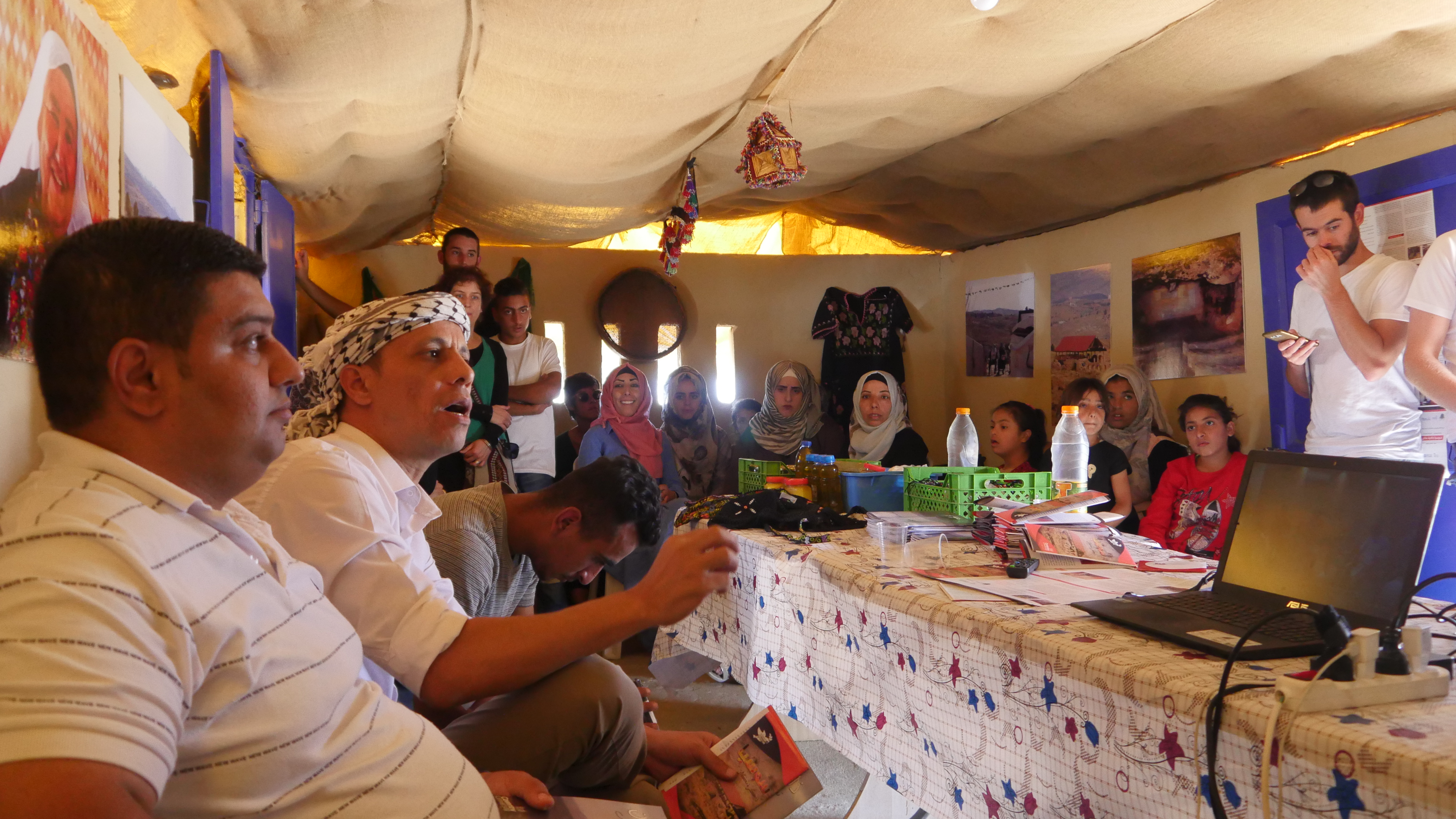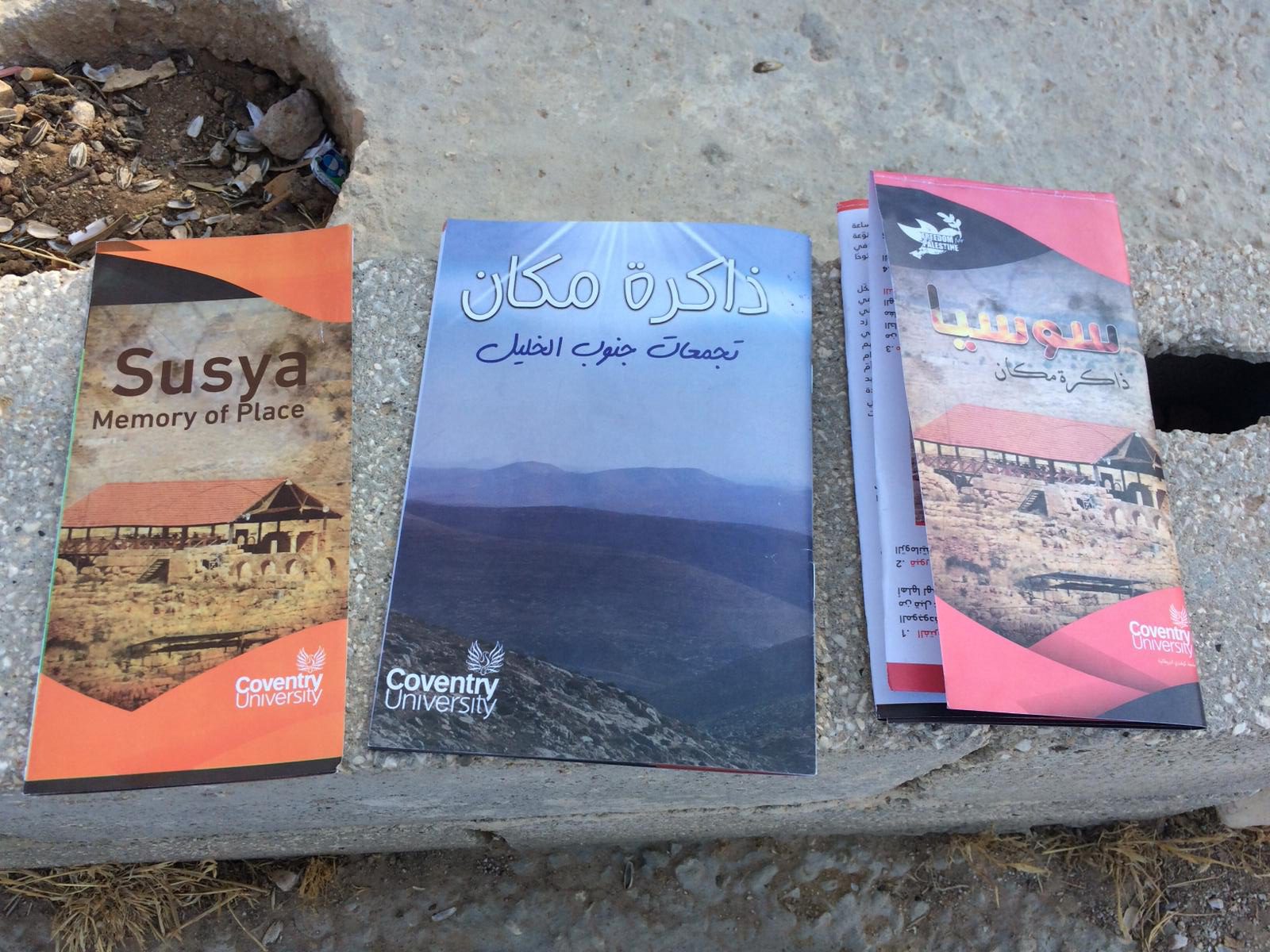Youth researchers in the South Hebron Hills celebrate the opening of heritage trails and exhibitions
25th October, 2018
Following more than a year of work, youth researchers in the South Hebron Hills were able to share the fruits of their work in the On Our Land project with their communities in October. As part of a small grant making programme the researchers developed two heritage trails and exhibitions in the communities of Al Twani and Susiya, based on the oral histories they had collected from communities there. The youth research team also produced two leaflets in collaboration with local historians, to guide visitors around the trails. These are available in both Arabic and English, and represent the first time the community has been able to formally document its history, culture and current concerns.

The researchers hope that these trails will attract more visitors to their villages, which are not widely known, and help them to learn more about their history and culture. They see this as another step towards preserving their cultural heritage at a time where this has been threatened by the effects of the protracted Israel-Palestine conflict. As one young researcher, Sawsan, explained to a visiting TV news crew covering the launch of the trail:
“The project taught us how to protect the cultural heritage which gradually people forgot and not used, with CU we started to revive this heritage by interviewing the older generation and collect this heritage and stories before they pass away. We want to collect, protect and document this heritage so when the younger generation grow up they will find it and can refer to this heritage.”

The trails take in a number of small villages around Al Twani, such as Al Moufaqara and Saroura, where the youth researchers have been busy documenting different aspects of the communities’ intangible cultural heritage from songs, to traditional medicines, to agricultural practices and foodstuffs. Researchers were happy to share examples of this during the inaugural trail visit, singing traditional songs for visitors and welcoming them to two exhibitions of photographs and cultural artefacts. Marwan Darweish, Principal Investigator from Coventry University, reflected on the project so far:
“Today we celebrate the successful completion of this 15 months project to protect and document the Palestinian cultural heritage. This marginalised area faces several challenges by the Israeli occupation, such as the closure of areas and restriction of movement, military training and land confiscation. It is also marginalised by the Palestinian Authority due to the fact that it is far in the south. We hope to extend this project to cover all south Hebron.”
The launch of the trails presented an ideal opportunity for the wider community around Al Twani and neighbouring villages in the South Hebron Hills to come together and celebrate the achievements of the 15-month long On Our Land project, and the youth researchers in particular. Around 70 people gathered to visit the exhibitions and share in a lunch of locally prepared foods, with project coordinator Hafez Huraini noting that the young researchers had “contributed to the resilience of this community” through their work, and that community members “are proud of what you did”.
In the weeks since the trails opened they have already been visited by 50 people, including groups from Spain, the UK and nearby Hebron University.
